Ensor answers the Proust Questionnaire
In April 1926, the Ostend magazine La Flandre Littéraire published an anthology of literary texts penned by James Ensor since 1921. They included a version of the famous Questionnaire de Marcel Proust, several of which had been in circulation since the late 19th century. Basically a personality test, it was very popular as a parlour game. Ensor adapted Proust’s version slightly, calling the result an ‘interview’ – a relatively new journalistic form at the time.
Ensorian outpourings
In his version of the Proust Questionnaire, Ensor tried hard to create a surprising, witty and cultivated impression and the ‘interview’ is full of the painter’s characteristically ironic humour. All the same, if you know how to read between the lines, it also tells us something about Ensor’s social and artistic ambitions, his views on sensitive current issues and his personal tastes.
Ensor was bilingual, but the Dutch he spoke consisted firmly of the Ostend dialect. So a certain amount of liberty has to be taken when translating his written French to give a flavour of the many double meanings. Explanatory notes are essential and you can find them below in the pink boxes.
Which quality do you most admire?
The illusion of the great.
Ensor loved overwhelming impressions, which made him an admirer of both Richard Wagner and the eccentric Antoine Wiertz, whom he called ‘the little master of the grandiose, an immense and exceptional dreamer’.
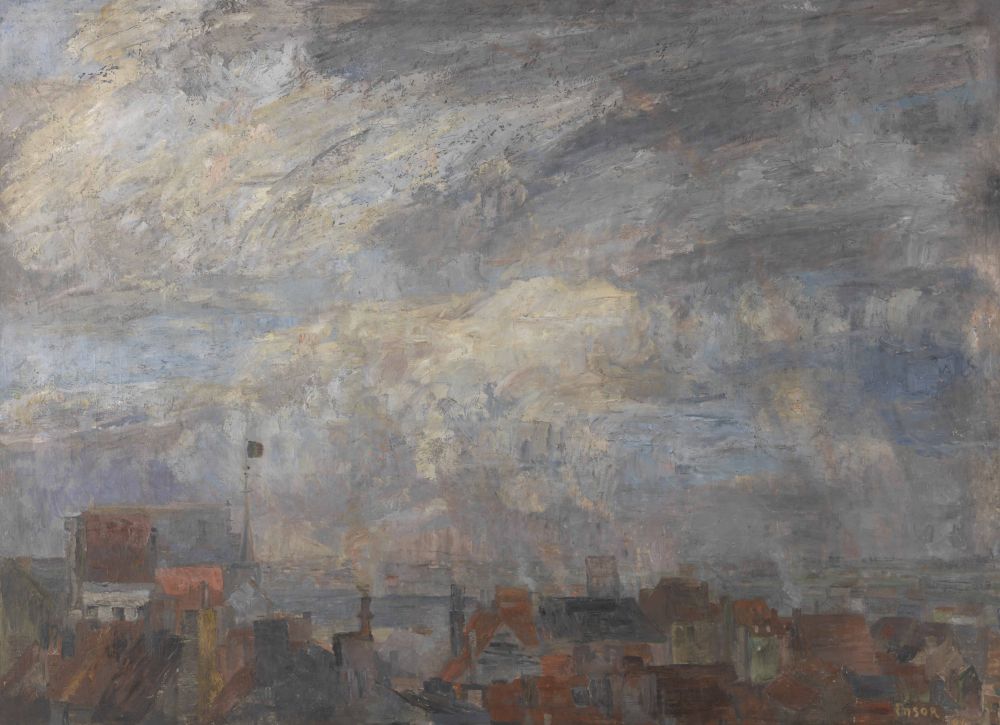
Rooftops of Ostend - James Ensor
What is your principal fault?
Nonchalance.
What is your favourite pastime?
Making others illustrious, making them ugly, embellishing them.
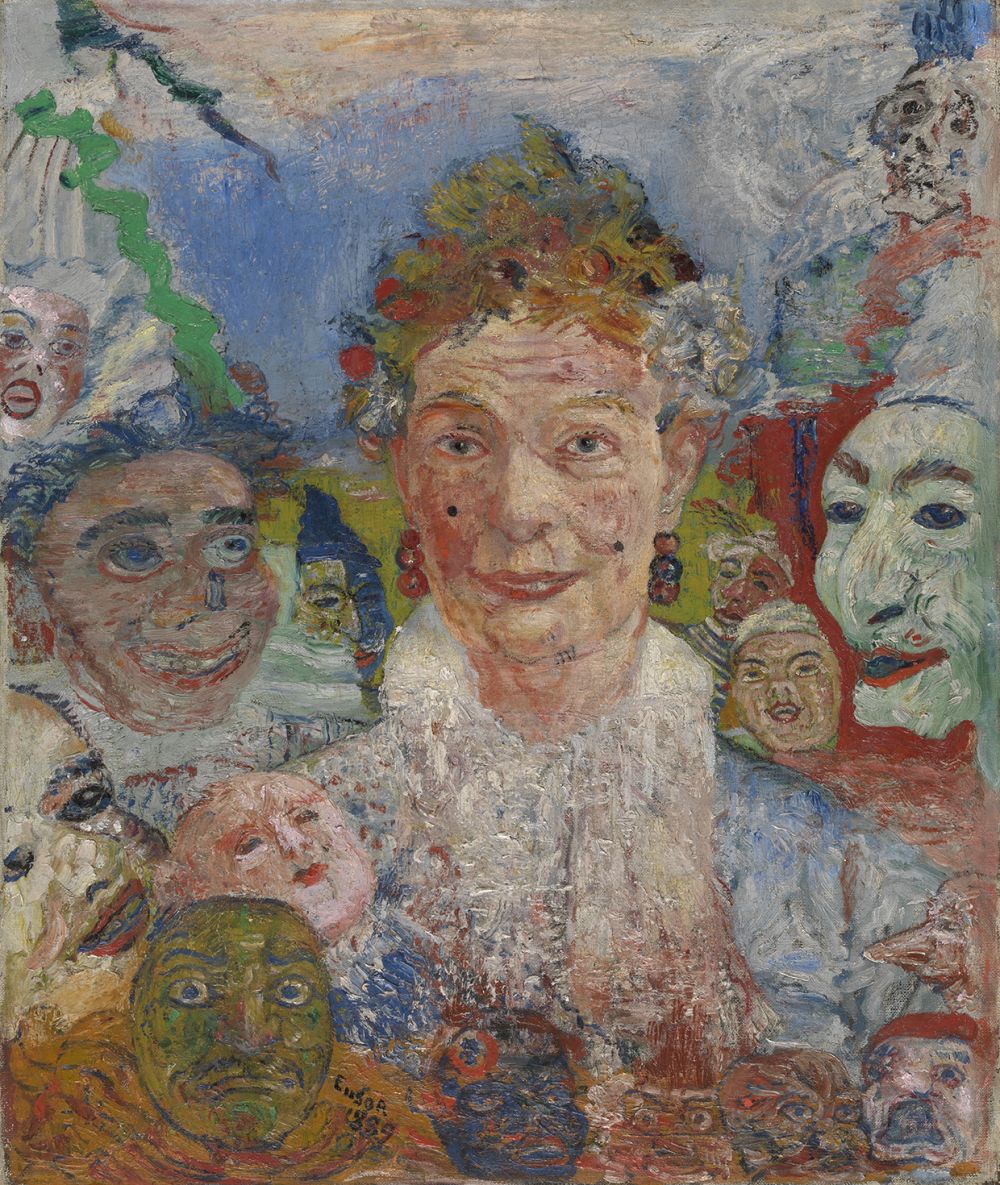
The Old Lady with Masks - James Ensor, Museum of Fine Arts Ghent, www.artinflanders.be, Photo Hugo Maertens
What is your dream of happiness?
Smiting Philistines with the jawbone of a camel.
The Philistines are portrayed as a savage people in the Old Testament. The legendary Jewish strongman Samson vanquished a thousand of them with the jawbone of an ass. Ensor railed throughout his career at the ‘Philistines’ in the figurative sense who failed to appreciate his art.
What is your idea of misery?
Indecision, horror at exhibitions.
Like virtually every modern artist, Ensor made art primarily to present for the approval of colleagues, connoisseurs and the public. Between 1881 and 1940, he took part in at least one, and often several, exhibitions each year in Brussels and other Belgian and European cities.
If not yourself, who would you be?
Methuselah’s wife.
In one of his ‘Lettres galantes de Monsieur le Chevalier D’Her’, the 18th-century French writer Bernard le Bouyer de Fontenelle commented that there was no point in waiting for your sweetheart to be widowed: ‘You might as well be in love with Methuselah’s wife’. Methuselah is a figure from both the Bible and the Koran who is said to have lived to the age of 969, making him the oldest human being in history. In the apocryphal Book of Enoch, he has a wife called Edna – ‘delight’ in Hebrew.
Where would you like to live?
The Land of Cockaigne, the Land of Sarcastia, the joyful Land of the Marolles.
Ensor’s joie de vivre is apparent from countless asides and adventures in the company of his Brussels pals. Cockaigne, the ‘Land of Plenty and of honey cakes’, was first sung about in the 13th-century manuscript Carmina Burana.
In his essay ‘Une réaction artistique au pays de narquoisie’, published in La Ligue Artistique in 1900, Ensor both jokes about and laments the decline of centuries-old Flemish artistic tradition.
In 1925 he hailed Pieter Bruegel as ‘Pete from the Marolles’ (the working-class district of Brussels).
What is your favourite colour?
Thigh of excited nymph, English red, a macaque’s rose-coloured posterior.
‘Cuisse de nymphe émue’ is the French name for the rose variety ‘Maiden’s Blush’ and a particular shade of warm pink.
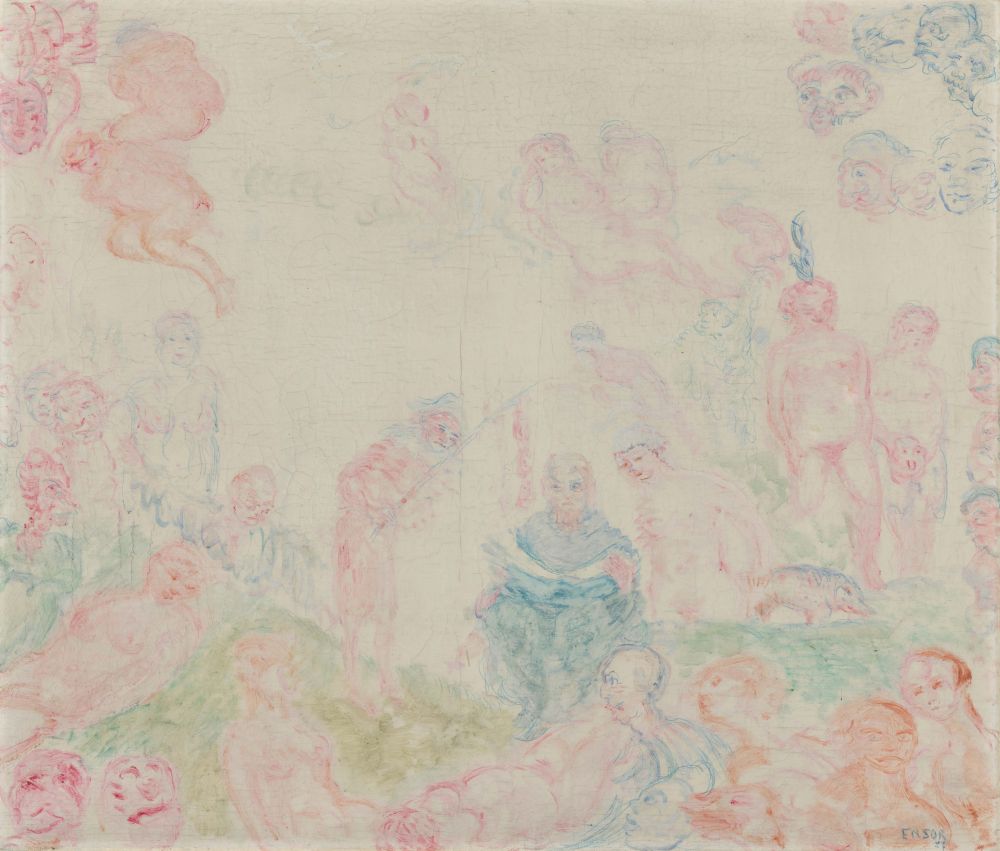
De bekoring van Sint Antonius - James Ensor, KMSKA
What is your favourite flower?
A lily grafted onto a dandelion. Iris. The poppied cornflower.
The latter is a free translation of ‘le bluet coquelicoté’. ‘Poppied’ is a typically Ensorian coinage created by turning nouns into verbs. Elsewhere he wrote: ‘Words attuned to our sorrows, I love you; red and Spanish lemon-yellow words, words of French lilies and Flemish cornflowers.’
What is your favourite animal?
The rabid crab. The badger. The butterfly. The ermine.
The lithofritocinocampophotobarbeaumussidextrospiliomekostinko. The battling curlew. General Boum and others.
Ensor uses the ambiguous terms ‘blaireau’, meaning both ‘badger’ and a badger-hair brush’, and ‘hermine’, meaning both ‘ermine’ (stoat) and an ermine-hair brush.
‘Plithofritocinocampophotobarbeaumussidextrospiliomekostinko’ is a virtually meaningless but evocative string of words.
Rather than the French word ‘courlis’ for ‘curlew’, Ensor used the West-Flemish dialect word ‘spuurluut’, which he spelled ‘spurlut’.
General Boum is a character from Jacques Offenbach’s anti-militaristic comic operetta of 1867, La Grande-Duchesse de Gérolstein.
What is your favourite bird?
The pheasant hen. Quail on toast. The crane.
Who is your favourite poet?
Claude Bernières, Madame de Noailles, Madame Eugène Van Outryve-d’Ydewalle. The siren.
Claude Bernières was a Catholic poet. Ensor gave a speech honouring her when she was awarded the Verhaeren Prize in 1923 and he also illustrated her poetry collection Les heures.
Clémence van Severen, a wealthy Catholic from Bruges, became Madame Eugène Van Outryve-d’Ydewalle.
Ensor called his friend Augusta Boogaerts ‘the mermaid’ or ‘siren’.
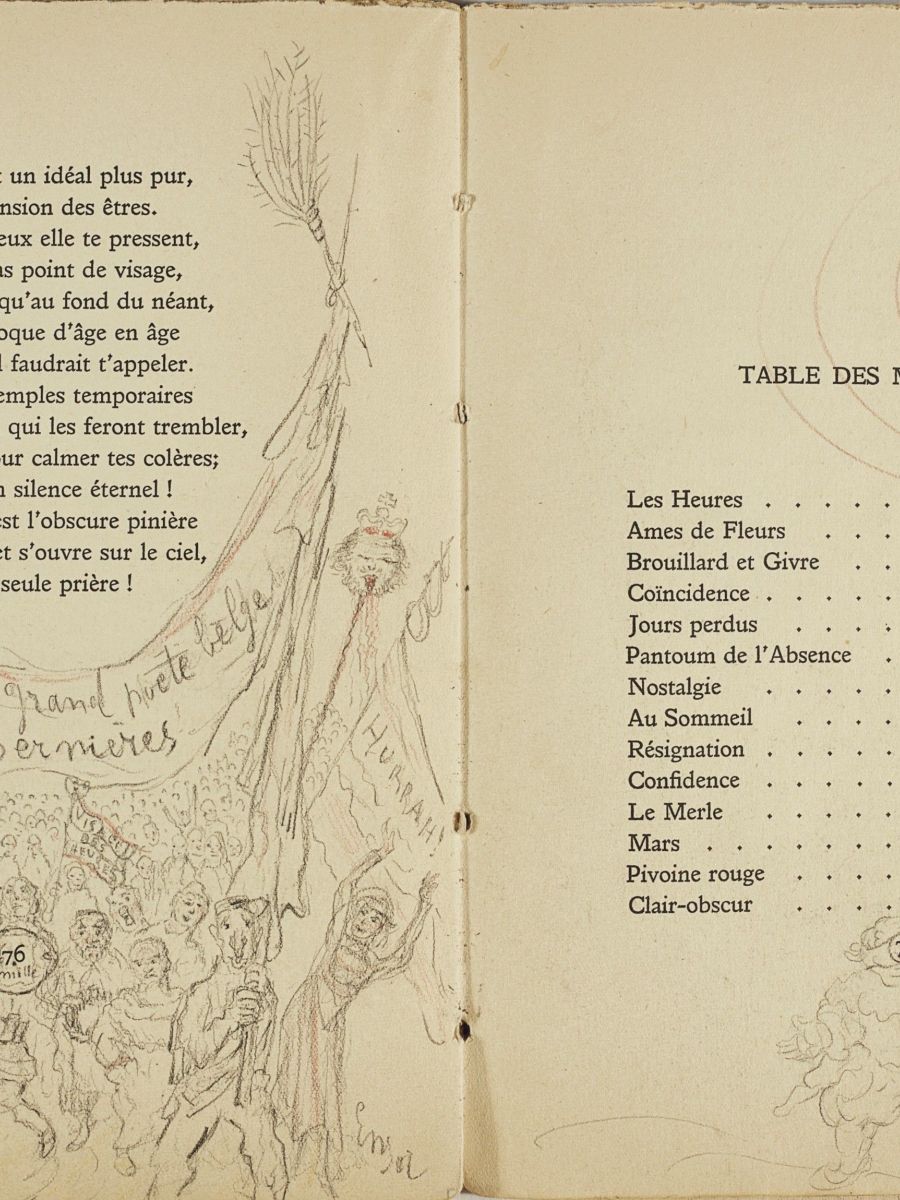
Illustration from the collection Les Heures - Claude Bernières - James Ensor, private collection
Who is your favourite painter?
Madame Emma Lambotte, Madame Vigée-Lebrun, Margareta van Eyck, Angelika Kaufmann, Rosa Bonheur.
It is surprising that Ensor only lists these women here. On another occasion, he expressed anger at the many women amateur artists who, in his view, undermined the quality of exhibitions in Ostend.
Emma Lambotte was an art critic, poet, painter and the leading collector of Ensor’s work.
Ensor’s Self-Portrait with Straw Hat, 1883 and 1888 (Mu.Zee Ostend) is a parody of Elisabeth Vigée-Lebrun’s painting of the same name.
Jan van Eyck’s painter-sister and his wife were both called Margriet/Margaretha.
Angelika Kaufmann and Rosa Bonheur were also important and successful artists.
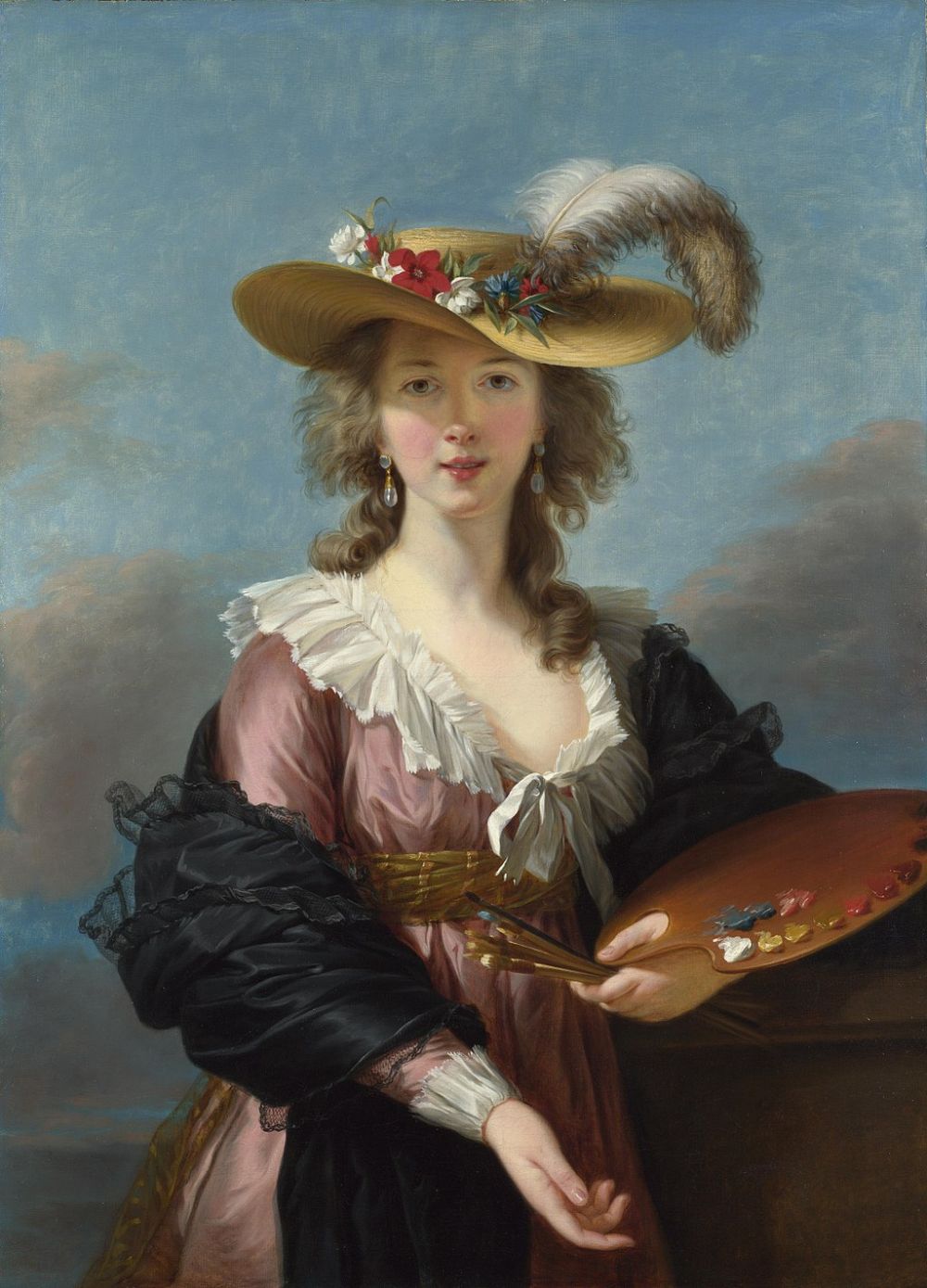
Self Portrait in a Straw Hat - Elisabeth-Louise Vigée-Lebrun, National Gallery Londen
Who is your favourite composer?
Mimi Pinson, Lala Vandervelde, Gabrielle Remy.
The French composer Gustave Charpentier founded the Conservatoir Populaire Mimi Pinson in 1902. The school, named after a character from a novel by Alfred de Musset, provided a musical education to young women from modest backgrounds.
Hélène Speyer was a cultivated English singer who was married to Maurice Kufferath, the much older progressive director of La Monnaie opera house in Brussels. She married again in 1902 to the Belgian Socialist leader Emile Vandervelde.
Who are your favourite heroes in fiction?
Vilain XIII, Raging Roland, Ratapoil, Tartarin.
Viscount Georges Vilain XIIII was a Catholic politician from the Waasland region. As a member of the Belgian Senate, he opposed the 1898 law to place the Dutch language on an equal footing with French when drafting new laws. There was a fierce response amongst some Flemings. It is not clear whether Ensor’s ‘Vilain XIIII’ refers to him and, if it does, whether the painter regarded him as a tragicomic hero or a genuine one.
Orlando Furioso – ‘Raging Roland’ – is the Carolingian hero of the early 16th-century work of the same name by Ludovico Ariosto.
Ratapoil (‘Ratskin’) is a fictional figure from the art of Honoré Daumier and other caricaturists who satirized Napoleon's militaristic supporters.
Alphonse published ‘Tartarin de Tarascon’, the knockabout adventures of the tragicomic hero Tartarin, in 1872.
Who are your favourite heroines in fiction?
Bradamante, Marphise.
Bradamante and Marphise are feisty female characters from Orlando Furioso.
Who are your heroes in real life?
The jolly curate of Meudon. King Dagobert.
Bruegel’s 16th-century literary counterpart was François Rabelais, author of ‘Gargantua’ and ‘Pantagruel’. Honoré de Balzac called him ‘le joyeux curé de Meudon’.
King Dagobert, meanwhile, refers to a traditional French song in which the said monarch ‘put his pants on backwards’.
Who are your heroines in real life?
Madame de Pompadour. Isabella the Catholic. Mrs Potiphar. Heloise. Mademoiselle de Sombreuil. Parysatis the eunuch-flayer.
The Marquise de Pompadour, Louis XV’s official mistress, was reinvented in the course of the 19th century as a patron of the arts and the leading minds of the Enlightenment and Romanticism.
Isabella 'la Católica' became Queen of Spain by acting decisively and ruthlessly at just the right moments.
Both the Old Testament and the Koran tell the story of Joseph, who was purchased as a slave by the Egyptian courtier Potiphar. The latter’s wife tried in vain to get Joseph to make love to her.
The renowned philosopher Abelard and the erudite Heloise were the most famous lovers in the Middle Ages and heroes of the 19th-century Romantics. After their clandestine love affair was revealed, Heloise was sent to a convent and Abelard castrated.
The French nobility suffered a bloodbath after the Revolution. The daughter of the Marquis de Sombreuil pleaded for her father to be spared. The revolutionary authorities granted her wish, on condition that she drank a goblet of ‘spilled’ blood. Her father was executed some years later anyway, but his daughter was revered for her heroism.
The merciless Persian queen Parysatis had the men implicated in her son’s death flayed alive.
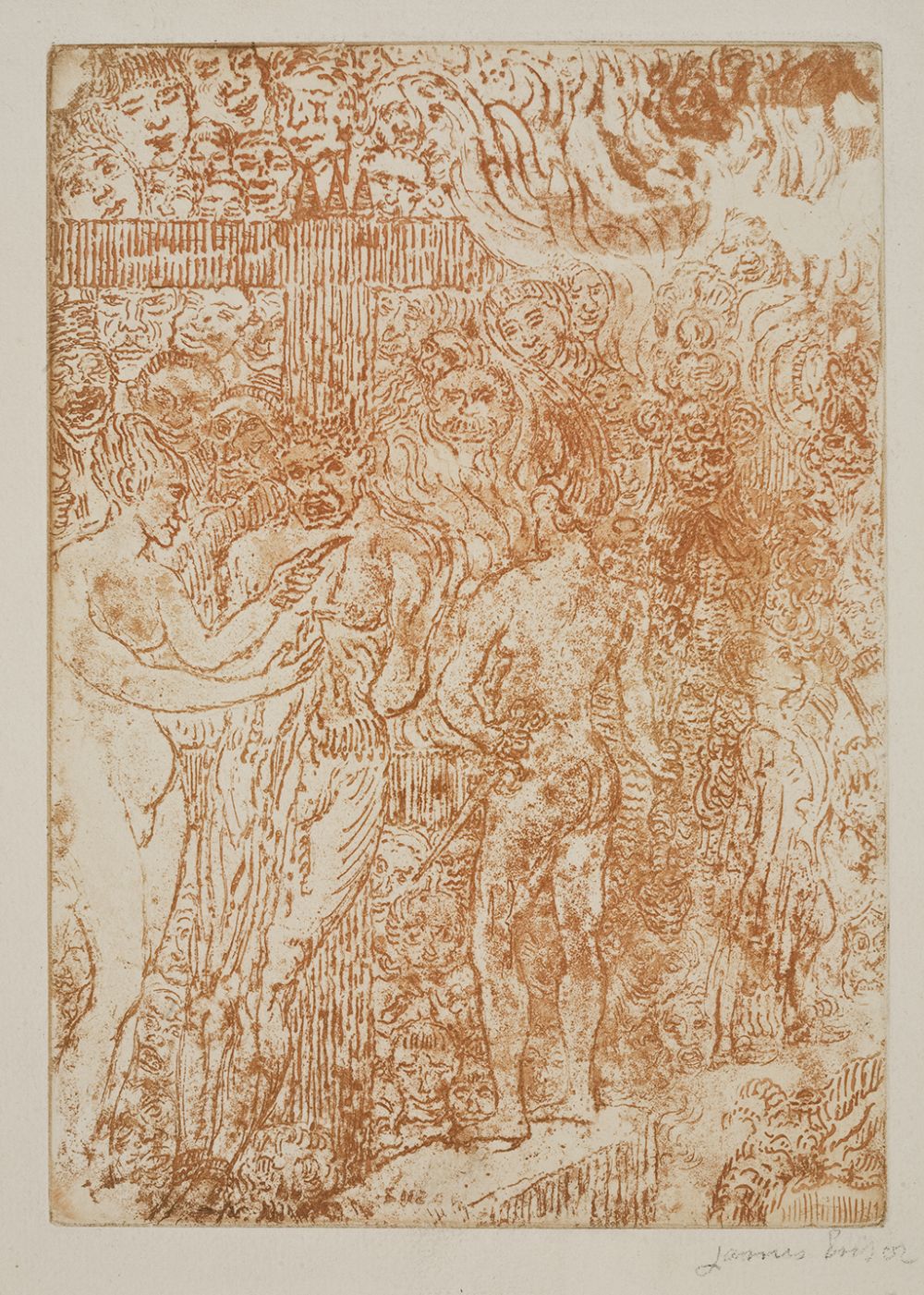
Queen Parysatis - James Ensor, Museum of Fine Arts Ghent, www.artinflanders.be, Photo Michel Burez
What is your favourite food and drink?
A glass of blue, brown bread, oranges, red cabbage, green fruit, pastors’ noses, nuns’ sighs.
‘Un gros bleu’ generally means a mediocre red wine, but Ensor refers to ‘un petit bleu’.
He mentions ‘fruits verts’, possibly meaning unripe fruit.
The ‘pastors’ noses’ are ‘cuberdon’ candies from Ghent.
While ‘nuns’ sighs’ – also called ‘nuns’ farts’... – are Flemish beignets.
What are your favourite names?
Claire, Rose, Blanche.
It is no coincidence that Ensor once again refers to one of his favourite colours: bright white-pink.
What is it you most dislike?
Blanched calf’s head and cod liver oil. Destroyers of historical sites. Inquisitors. Arrogant, untrustworthy scholars. Vivisectionists, bursting with cruelty, swollen with conceit and profitable insensibility.
Ensor was fiercely opposed to animal experimentation, the demolition of historical monuments and the destruction of landscapes. As an atheist, he never missed a chance to bring up the Inquisition. But he was also sceptical about blind faith in science.
Which historical figure do you most dislike?
Jozef. Torquemada. Pontius Pilatus.
The 15th-century Dominican Tomás de Torquemada was the driving force behind the Catholic Inquisition.
Pontius Pilate was the hypocrite par excellence. He left it up to the mob to condemn Christ to death by crucifixion and then washed his hands to assert his innocence.
As to why Ensor would include Joseph – whether Jesus’ human father or the Old Testament character – in this company, we can only guess.
Which military campaign do you most admire?
The abduction of the Sabine women. The siege of Ostend.
Rome’s legendary founder, Romulus, decided to boost the population of his new city by kidnapping the women from the neighbouring tribe, the Sabines.
Spanish Catholic troops under the command of Archduke Albert and the Infanta Isabella laid siege in 1601–04 to the final bulwark of Protestantism in the Southern Netherlands. The garrison at Ostend was eventually defeated and the city partially destroyed
Which reform do you most appreciate?
The reform of a poor and worn-out constitution.
What natural talent would you most like to possess?
Second sight.
How do you want to die?
Like a flea crushed on a virgin’s white breast.
What is your current state of mind?
Strolling, roaming, cavorting, cantering, capering and sporting.
Rather free translation of ‘Chemine, vagabonde, cabriole, califourchonne, caracole.’
Of which failing are you most indulgent?
Spelling mistakes.
What is your motto?
Braggartly self-satisfaction calls for fatal froggish rupture.
Ensor’s ‘finale crevaison grenouillère’ alludes to the frog in the fable by La Fontaine, which kept inflating itself with pride until it burst. He first used the motto in 1896 in his satirical pieces about his fellow artists Jean Delville and the Stevens brothers.




